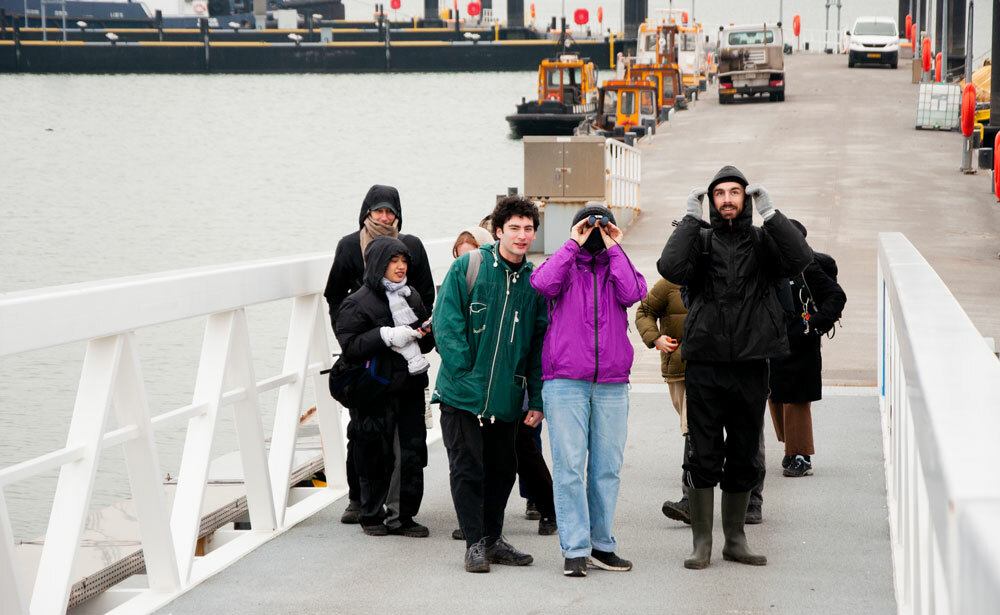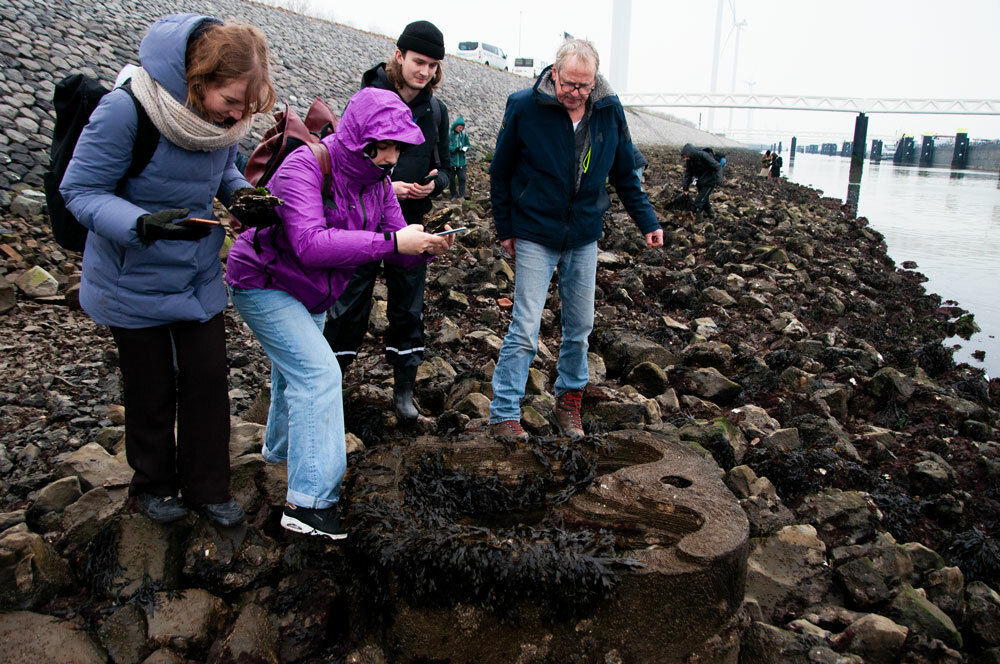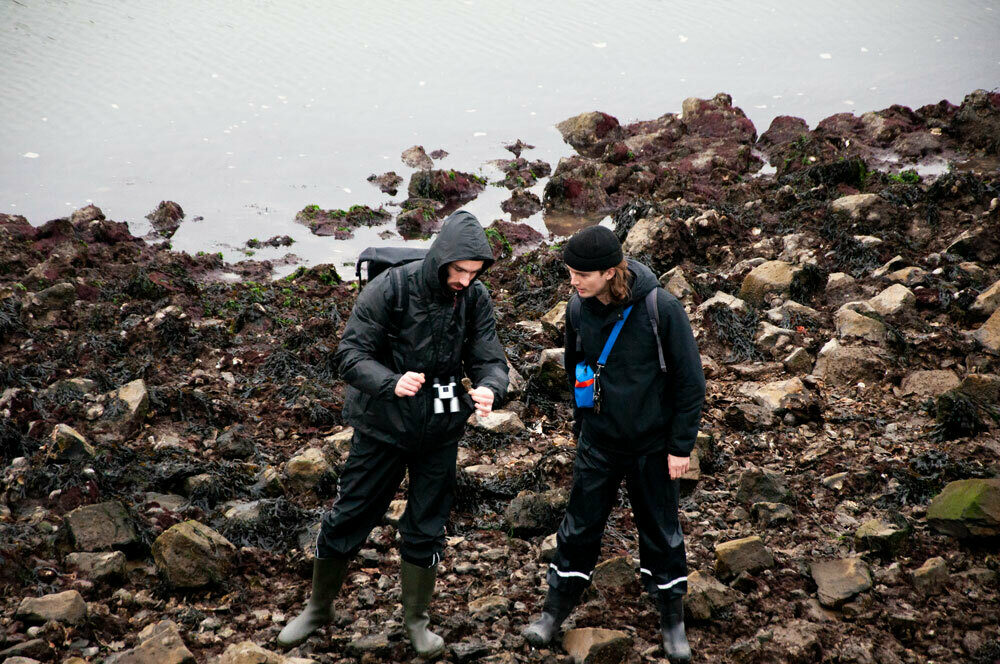This field trip is part of the Graphic Design project weeks: Questions to Dismantle the Masters’ House.
Port Proximities is a field trip and research excursion to the Port of Rotterdam with
This field trip has been guided by Louis Braddock Clarke and Marit van der Meulen in Collaboration with Peter Paalvast and Juliette Gilson.
Peter Paalvast threw the students straight into the deep end by abseiling us all down the estuary banks via a rope attached to the back of his van. With the low tide we examined the biodiversity of the area, discovering oysters, mussels, crabs, and invasive Japanese seaweeds. The students got their hands dirty opening up Peter’s measuring instruments to see the natural life of the Maas. He showed us 3D printed ECOncrete tidal pools, and shipworm contraptions submerged in the estuary.
This area of the Maas was once a ‘Dead Zone’ having almost no biodiversity and was heavily polluted due to port activities. Peter works in improving and facilitating non-human life such as ship worms, crustaceans, and mussels. He showed us his designs which used recycled materials such as ship ropes, buckets, sail fabrics, and wooden blocks.
During the trip we went off-road and stranded our research vessel in deep mud, only to be towed out by a generous Romanian trucker. Following this event we headed to the Balcony of Europe, which lies at the mouth of the Maas estuary. The students undertook ship spotting activities, observing the capital moving in and out of the port. Minerals, fertilisers, gas, and consumer goods all passed right before our eyes on mega container ships from distant shores.


The afternoon programme explored the liminal space between port and city. Neither city nor port, this hybrid and heterogeneous zone embodied the complexity of the current port-city relationship. Juliette Gilson (architect) opened up her research ‘The Third Landscape’. A project which investigates and publishes her interests on port-city life. Neither city nor port, this hybrid and heterogeneous zone embodies the complexity of the current port-city relationship. She guided the students through an urban investigation of the port-town Pernis, an ever changing place with a history in fishing that became disrupted by port traffic, and today neighbors the shell gas works. Juliette walked the students through this liminal space triggering researching, making, speculating and communicating with the urban sprawl. Together we moved through container ship factories, old fishing houses, gas stations, derelict parks, and meandered the Maas. The immersive walk utilised all senses to inform and trigger the experience, the smell of industry surrounded us.
Student research questions, inspired by the fieldwork trip:
Dans Jirgensons: How do natural cycles shape the routines, passions, and identities of fieldwork professions?
Aliona Ciobanu: How does the policy of the Rotterdam Port, regarding companies' activity and produced waste, influence or force the forming of the local queer landscape and biodiversity?
Loïs van Spijk: To what extent does the factor of time contribute to the feeling of being at home somewhere?
